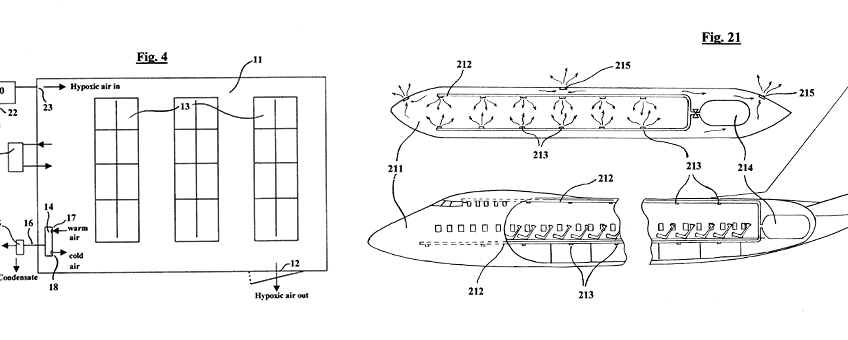
Airbus v Firepass Corporation
Airbus S.A.S. v. Firepass Corporation
No. 2019-1803 Fed. Cir. Before Circuit Judges Lourie, Moore, and Stoll.
Airbus S.A.S. appealed the Patent Trial and Appeal Board’s reversal of the patent examiner’s rejection of certain new claims presented by patent owner Firepass Corporation in an inter partes reexamination of U.S. Patent No. 6,418,752. The issue on appeal was the Board’s finding that an asserted prior art reference (the “Reference”) fails to qualify as relevant prior art because it is not analogous to the claimed invention of the ’752 patent. The Court vacated the Board’s reversal of the rejection and remanded for consideration of the reference. The Court stated that two separate tests define the scope of analogous prior art:
- whether the art is from the same field of endeavor, regardless of the problem addressed and,
- if the reference is not within the field of the inventor’s endeavor, whether the reference still is reasonably pertinent to the particular problem with which the inventor is involved.
The Board found that the field of endeavor for the ’752 patent is devices and methods for fire prevention/suppression. The Reference discloses equipment for providing hypoxic air in an enclosed area for the purposes of athletic training or therapy. The Court agreed that the Board’s finding under the field of endeavor test is supported by substantial evidence. The Board relied on the preamble of claim 1, the title and the specification (without citation) of the ’752 patent to determine that the ’752 Patent is directed to the problem of fire prevention and fire suppression. The Board quoted the title of the Reference and along with several passages from the Field of the Invention of the Reference. The Board also emphasized the absence of the term “fire” in the Reference. The Court stated: “We cannot say that the Board’s finding is unreasonable.”
With regard to the second test, the Court indicated that a reference outside an inventor’s field of endeavor is “reasonably pertinent” only if its subject matter “logically would have commended itself to an inventor’s attention in considering his problem” and the skilled inventor “would reasonably have consulted those references and applied their teachings in seeking a solution to the problem that the inventor was attempting to solve.”
The Court found that four other prior art references are relevant to the question of whether a person of ordinary skill in the art of fire prevention and suppression would have reasonably consulted references relating to normbaric hypoxic atmospheres to address the problem of preventing and suppressing fires in enclosed environments. Unlike the Reference, the four references did not teach the use of an enclosed area. Still, the Court stated, “[t]hese references could lead a reasonable factfinder to conclude that an ordinarily skilled artisan in the field of fire prevention and suppression would have looked to (the Reference) for its disclosure of a hypoxic room, even though (the Reference) itself is outside the field of endeavor.”
Focusing on the question of what an ordinarily skilled artisan would have known, the Court stated “an analysis of whether an asserted reference is analogous art should take into account any relevant evidence in the record cited by the parties to demonstrate the knowledge and perspective of a person of ordinary skill in the art.” The Board failed to take into account evidence provided by the four references in determining whether or not the Reference was analogous art.
Read more: Federal Bar member attorneys may access the full case summary by registered patent attorney B.C. “Bill” Killough in the December 2019 issue of Federal Circuit Case Digest
 B.C. Killough is a registered patent attorney based in Charleston, SC. On behalf of his clients, Bill has obtained more than 300 United States patents, participated in prosecuting more than 100 foreign patent applications and he has filed more than 1000 trademark applications with the US Patent and Trademark Offices.
B.C. Killough is a registered patent attorney based in Charleston, SC. On behalf of his clients, Bill has obtained more than 300 United States patents, participated in prosecuting more than 100 foreign patent applications and he has filed more than 1000 trademark applications with the US Patent and Trademark Offices.